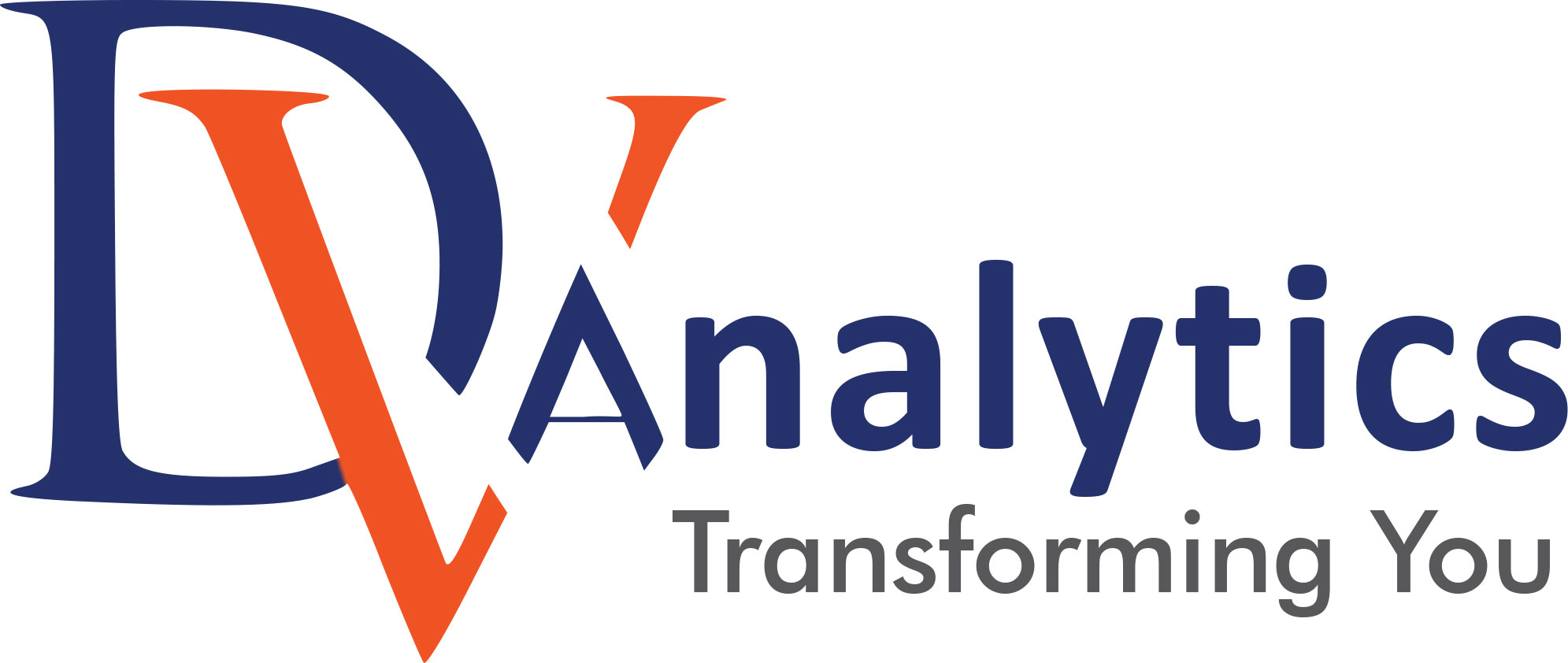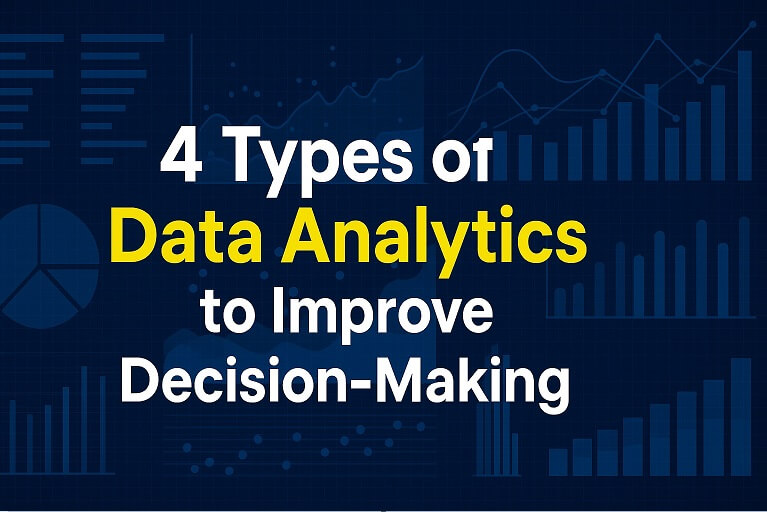Data is a powerful tool which is available to organizations at an immense scale. When leveraged correctly, it has the potential to promote decision-making, impact strategy formulation, and improve organizational performance.
According to a recently published report, by a leading business intelligence organisation,more than half respondents said that Data Analytics leads to “faster, more effective decision-making” at their companies. Other benefits cited include:
- Improved efficiency and productivity
- Better financial performance
- Better customer acquisition and retention
- Competitive advantage
- Identification and creation of new products
- Creation of new services & revenue streams
How can an individual harness the power of data and get these benefits at your workplace or organisation? Learning how to analyse data effectively can help you to reach conclusions, get predictions, and actionable insights to drive impactful decision-making.
What Is Data Analytics in Business?
Data analytics is all about digging into data to find answers, spot trends, and pull out valuable insights. When we talk about data analytics in the business world, we often refer to it as Business Analytics. There are plenty of tools, frameworks, and software options available for analyzing data, like Microsoft Excel, Power BI, Google Charts, Data Wrapper, Infogram, Tableau, and Zoho Analytics.
These resources can help you look at data from various perspectives and create visualizations that really bring your story to life. Algorithms and machine learning also play a big role in data analytics, allowing us to collect, sort, and analyse data much faster and in larger volumes than we could ever do manually. While writing algorithms is a more advanced skill in the data analytics realm, you don’t need to be a coding or statistical modelling expert to reap the rewards of making data-driven decisions.
Who Needs Data Analytics? Every business professional who makes decisions should have a solid grasp of data analytics basics. With data being more accessible than ever, if you’re crafting strategies and making choices without considering the data at your fingertips, you might overlook significant opportunities or warning signs that it has to offer.
Professionals who can benefit from data analytics skills include:
- Marketers, who utilize customer data, industry trends, and performance data from past campaigns to plan marketing strategies
- Product managers, who analyse market, industry, and user data to improve their companies’ products
- Finance professionals, who use historical performance data and industry trends to forecast their companies’ financial trajectories
- Human resources and diversity, equity, and inclusion professionals, who gain insights into employees’ opinions, motivations, and behaviors and pair it with industry trend data to make meaningful changes within their organizations
To get the greatest insight from your data, train yourself with the four key types of data analytics. Here’s a breakdown of the types, which you can use individually or in tandem to maximally benefit from your company’s data.
4 Key Types of Data Analytics
- Descriptive Analytics
Descriptive analytics is the simplest type of analytics and the basisof analytics the other types are built on. It allows you to pull trends from raw data and concisely describe what happened or is currently happening.
Descriptive analytics answers the question, “What happened?”
For example, imagine you’re analysing your company’s data and find there’s a seasonal surge in sales for one of your products: a video game console. Here, descriptive analytics can tell you, “This video game console experiences an increase in sales in October, November, and early December each year.”
Data visualization is a natural fit for communicating descriptive analysis because charts, graphs, and maps can show trends in data—as well as dips and spikes—in a clear, easily understandable way.
- Diagnostic Analytics
Diagnostic analytics dives into the next big question:“Why did this happen?”It takes the analysis a step further by comparing trends, uncovering correlations between different variables, and figuring out causal relationships whenever possible.
For example, if you look at the demographic data of video game console users, you might find that they’re mostly aged between eight and 18. Interestingly, the buyers tend to be in the 35 to 55 age range. Customer surveys often reveal that a key reason for purchasing these consoles is to gift them to their kids. The noticeable spike in sales during the fall and early winter months likely ties back to the holiday season, which is all about gift-giving. So, diagnostic analytics really helps in getting to the heart of an organizational issue.
- Predictive Analytics
Predictive analytics is all about forecasting future trends or events, answering the question, “What might happen down the line?”
By examining historical data alongside industry trends, you can make educated guesses about what the future might look like for your business. For instance, if you know that video game console sales have consistently surged in October, November, and early December over the past ten years, you have a solid basis to predict that this trend will likely repeat next year. With the overall upward trajectory of the video game industry, this prediction seems quite reasonable. Being able to forecast future events can really help your organization develop strategies based on probable scenarios.
- Prescriptive Analytics
Finally, prescriptive analytics answers the question, “What should we do next?”
Prescriptive analytics looks at every possible factor in a given situation and offers actionable insights. This kind of analytics is particularly valuable when you’re making decisions based on data.
To illustrate with a video game example: What should your team do considering the expected seasonal trends due to winter gift-giving? You might choose to run an A/B test featuring two ads: one aimed at the end-users (the kids) and another directed at their parents. The results from that test can guide you on how to make the most of the seasonal uptick and its likely causes. Alternatively, you could ramp up your marketing efforts in September with holiday-themed messages to try to extend that spike into another month. While you can certainly conduct manual prescriptive analysis, many people turn to machine-learning algorithms to sift through large amounts of data and suggest the best next steps.
These algorithms operate using “if” and “else” statements, which act as rules for analysing data. If a certain set of conditions is met, the algorithm will recommend a specific action. There’s a lot more to machine-learning algorithms than just those statements, but they, along with mathematical equations, are fundamental to how these algorithms are trained.
Using Data to Drive Decision-Making
To truly grasp the story that your data tells and make well-informed decisions, it’s essential to use all four types of data analysis together. Start with descriptive analytics to get a clear picture of your company’s current state. Then, dive into diagnostic analytics to uncover how you arrived at that point. Predictive analytics comes into play when you want to forecast future trends—will the current patterns hold? Lastly, prescriptive analytics helps you evaluate all the factors at play in both current and future scenarios, allowing you to devise actionable strategies.
Depending on the challenges you face and your objectives, you might choose to utilize two or three of these analytics types, or even apply them in sequence for a more comprehensive understanding of your data’s narrative. By honing your analytics skills, you can unlock valuable insights from your data, propelling both your organization and your career forward.
Find the best data analytics Institute in Bangalore for your career
 SINCE 2010
SINCE 2010 